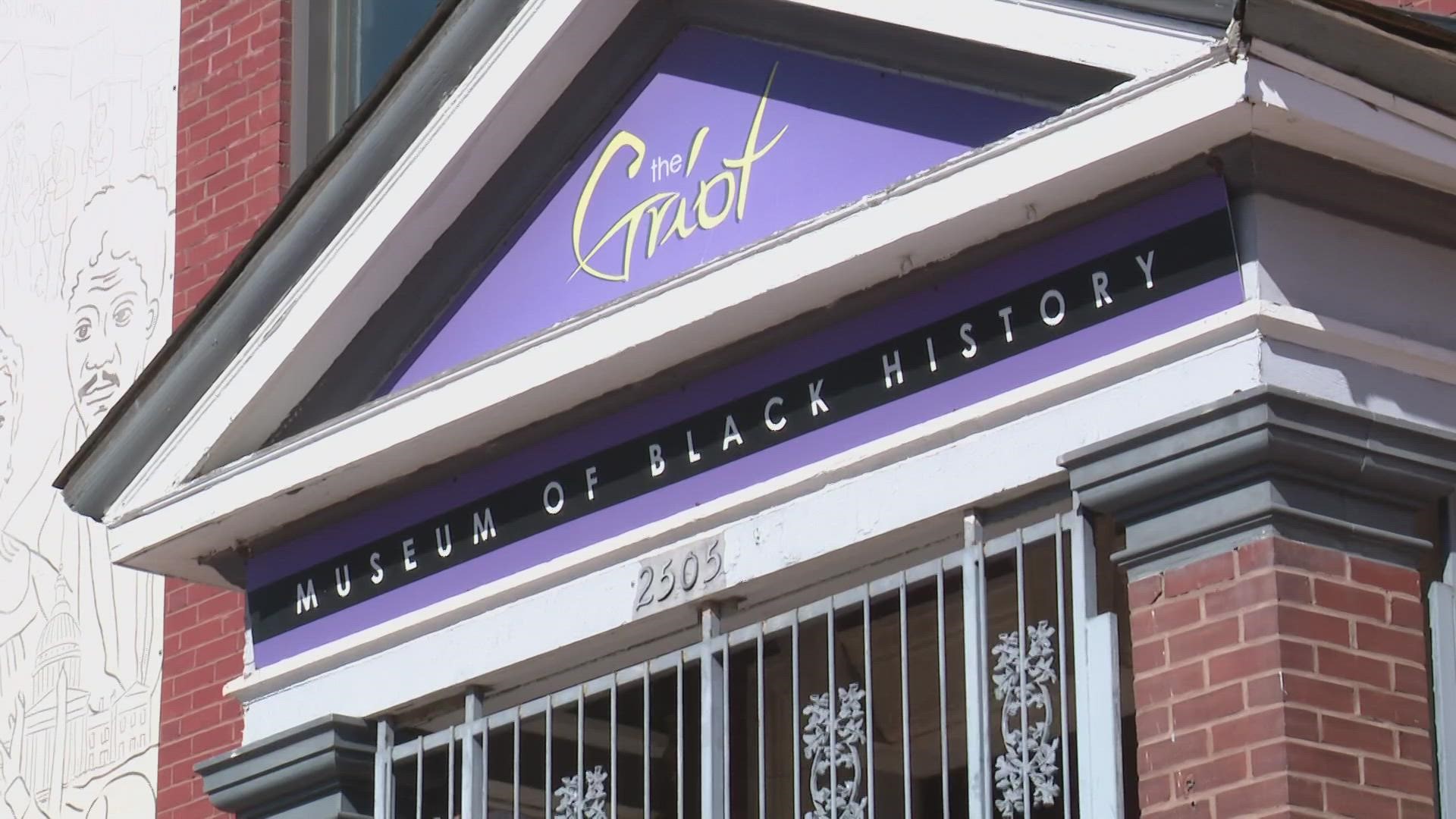ST. LOUIS — Every Monday during the month of February, 5 on Your Side has introduced you to historic figures and sites around St. Louis on our "Today in St. Louis" morning show.
This week, we’re taking you inside one of the most unique museums in the Midwest. Its halls are filled with historic figures made of wax.
Sydney Stallworth takes us on a trip to the Griot Museum of Black History.
Only the second of its kind in the country, The Griot Museum opened as "The Black World History Wax Museum" in February 1997. The name was changed to Griot in 2009. "Griot" is a West African term.
Lois Conley, Founder and Executive Director of the Griot Museum, said it means, “The importance of preserving history and culture and passing that on to other generations.”
“We’re so talented, we can do just about anything," Conley said.
The museum brings Black History to life. “This is the first Black History museum in St. Louis basically, and we’re the second museum to use wax life-size figures to tell our stories," Conley said.
The wax figures in St. Louis’s Griot Museum are quite literally a labor of love for Conley. She has hand-sculpted many figures on display.
She said, “It could take 6, 7, 8 months … You have to do your research. In some cases, there are no photographs. Just a vague description of the person. I’m also trying to find height, the weight, skin tone.”
With each step through the halls, visitors learn new ways Black people of the past have shaped our present and future.
“Our stories highlight Missouri and a regional connection to history, but we know we can’t begin any historical stories about African Americans in this country unless you start with Africa,” Conley said.
Depictions of village life and artifacts from West African communities line the walls in the first room of the museum. Then, the display moves on to the Transatlantic Slave Trade and the Middle Passage.
Conley shows a recreation of a slave ship.
“This gives an example of what it would have been like in the hull of a ship and transported across the waters for any indefinite period … probably at least three months," she said.
Centuries later, slavery still casts dark shadows over St. Louis and far beyond. Conley shows a map of locations with ties to slavery in St. Louis.
“Enslaved people were sold, some in the courthouse and some in other places in St. Louis…" Conley said. "Those red pins pinpoint areas where some form of slave trading or slave industry was happening."
The remnants still remain. Farther into the museum, Conley shows a full-sized cabin on display.
“This is a slave cabin that we actually went down and dismantled in Warren County, Missouri,” she said.
The wax figures feature Black people who shaped not just Missouri’s history, but American history, overcoming unimaginable odds.
There is a wax figure of York, an enslaved man who became the first African American to cross the continent, traveling alongside Lewis and Clark.
“York was supposed to get his freedom after returning to St. Louis. But, he didn’t. We don’t know much about what happened to him after that,” Conley said,
Another wax figure depicts Elizabeth Keckley, a woman who was enslaved in St. Louis. Drawing upon her earnings as a seamstress, Keckley was able to purchase her freedom from slavery in 1855.
“She eventually makes her way to Washington, DC, and becomes the seamstress for Mary Todd Lincoln,” Conley said.
Elizabeth Keckley also went on to found the Contraband Relief Association in 1862, which offered food, clothing and shelter to the most destitute segments of the African American population.
Some figures depict more recent trailblazers. Like Sherman George, former chief of the St. Louis Fire Department. There is also a figure dedicated to Percy Green.
“He eventually formed a group called A.C.T.I.O.N … They did a lot of sit-ins and job stoppages. Most notably, he and another comrade climbed the arch when it was in construction and they shut it down. Because they did not have any African American workers on the project,” Conley said.
The Griot is expanding. A new art installation is currently in construction outside the museum.
Conley said, “It’s part of the counter public 2023 art exhibit, which is an art exhibit that will stretch 6 miles across Jefferson."
“The display we’re building is by Sir David Adjaye… He is the person who also designed the new African American Museum of History and Culture in Washington, DC,” she said.
Conley has hopes to bring more visitors, donors and sponsors to the museum.
“This is a museum that tells our story that connects all of our stories. So we want everybody to be supportive and to feel like it's their museum.”
The museum also has a new "Herstory" initiative, partnering with Monument Labs to create monument markers across the city dedicated to Black women who have made political, social and cultural contributions to St. Louis.
Most of the museum’s exhibits are funded by donations. To learn more about the museum, click here.
To watch 5 On Your Side broadcasts or reports 24/7, 5 On Your Side is always streaming on 5+. Download for free on Roku or Amazon Fire TV.

